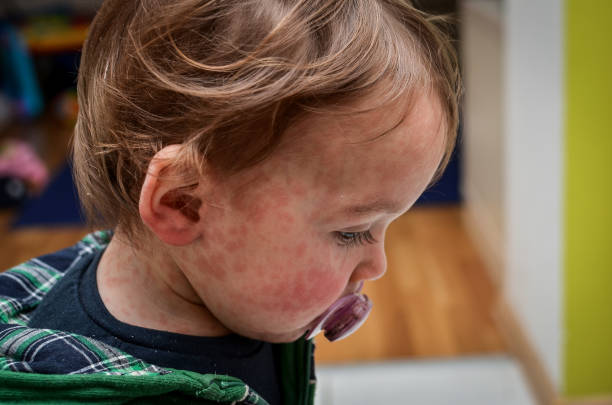
Measles Outbreak in Utah: Nine Cases Confirmed, Vaccination Urged
A concerning measles outbreak is underway in Utah, with nine confirmed cases reported by the Utah Department of Health and Human Services (DHHS). This alarming rise underscores the critical importance of vaccination in preventing the spread of this highly contagious disease.
The Growing Outbreak: Nine Confirmed Cases in Utah
The number of confirmed measles cases in Utah has climbed to nine, prompting urgent action from state health officials. All nine individuals were unvaccinated, highlighting the direct link between vaccination status and infection. The DHHS is actively investigating the cases to identify potential exposure locations and individuals at risk. They are urging anyone who believes they may have been exposed to contact their healthcare provider before visiting a clinic or hospital to prevent further spread. The rapid increase in cases necessitates a swift and comprehensive public health response to contain the outbreak effectively. The situation emphasizes the urgent need for widespread vaccination to prevent further infection and a larger outbreak.
Understanding the Risk: Measles Symptoms and Prevention
Measles is a highly contagious respiratory illness characterized by a distinctive rash, high fever, cough, runny nose, and red eyes. Symptoms typically appear one to two weeks after exposure. The DHHS emphasizes that the most effective way to prevent measles infection is through vaccination. The MMR (measles-mumps-rubella) vaccine is highly effective, with a 97% success rate when two doses are administered. Given the contagious nature of measles, individuals experiencing symptoms after potential exposure are urged to self-isolate and contact their healthcare provider immediately. Public health officials are actively working to identify areas of potential exposure and inform the public of any relevant risks. The swift and decisive action taken by the Utah DHHS showcases a commitment to proactively mitigating the spread of this highly contagious disease.
Neighboring States on Alert: Tracking the Spread
The confirmed measles case in neighboring Colorado has heightened concerns about the potential for further spread. Utah health officials are closely monitoring the situation in neighboring states, recognizing the ease with which this highly contagious disease can cross state lines. The interconnected nature of travel and community interactions makes regional cooperation essential in containing outbreaks. This emphasizes the need for coordinated public health efforts across state lines to prevent the escalation of the outbreak and minimize the impact on the wider population. The trans-state nature of this outbreak highlights the importance of vaccination and preventative measures, ensuring communities across states are protected.
Public Health Response: Investigation and Prevention
The DHHS is actively investigating the confirmed cases to identify exposure locations and individuals at risk. They are providing detailed information on potential exposure sites to allow for targeted preventative measures and early detection of further cases. This proactive approach to identifying and addressing the outbreak aims to minimize its impact and prevent further spread. The emphasis on preventative measures, including vaccination and early contact with healthcare providers, indicates a commitment to public health and a proactive approach to managing the outbreak. The DHHS’s commitment to thorough investigation and transparent communication helps build public trust and confidence in its ability to control the spread of measles.
Key Takeaways:
- Nine confirmed measles cases in Utah highlight the urgent need for vaccination.
- Measles symptoms include rash, fever, cough, and runny nose; vaccination is the most effective prevention.
- The Colorado case necessitates close monitoring of neighboring states.
- DHHS is actively investigating and providing information on potential exposure locations.
- Early contact with healthcare providers and self-isolation are crucial for preventing further spread.
